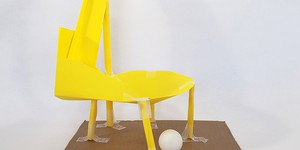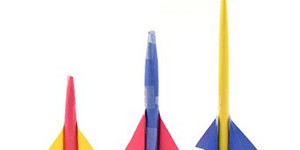Sixth Grade Lesson Plans (133 results)
Science Buddies' sixth grade science projects are the perfect way for sixth grade students to have fun exploring science, technology, engineering, and math (STEM). Our sixth grade projects are written and tested by scientists and are specifically created for use by students in the sixth grade. Students can choose to follow the science experiment as written or put their own spin on the project.
For a personalized list of science projects, sixth graders can use the Science Buddies Topic Selection Wizard. The wizard asks students to respond to a series of simple statements and then uses their answers to recommend age-appropriate projects that fit their interests.
|
Select a resource
Sort by
|
Lesson Plan
Grade: 6th-8th
37 reviews
What goes up, must come down in this thrill-seeking lesson plan! How much energy does a roller coaster car need to make it through a loop? In this lesson your students will learn about kinetic and potential energy as they build their own roller coasters from simple classroom materials.
Read more
NGSS Performance Expectations:
Lesson Plan
Grade: 6th-8th
15 reviews
When light interacts with an object, it can be absorbed, transmitted, or reflected. This lesson focuses on materials that reflect light. Specifically, students will use mirrors and flashlights to investigate how light is reflected from a surface. By doing that, they will discover that when a light ray hits a reflective surface, its angle of incidence is equal to the angle of reflection, which is stated by the law of reflection. Students will then use their gained knowledge in a mirror maze…
Read more
NGSS Performance Expectations:
Lesson Plan
Grade: 6th-8th
35 reviews
Your students will design, build, and race balloon-powered cars in this fun lesson plan that teaches about engineering design and kinetic and potential energy.
Read more
NGSS Performance Expectations:
Lesson Plan
Grade: 6th-8th
10 reviews
Explore how technology can save lives in this fun engineering lesson plan! Earthquakes can cause devastation and loss of life when they strike, but earthquake-resistant buildings can stay standing and keep people safe. In this project, your students will build model earthquake-resistant buildings and measure their movement during a simulated earthquake using a mobile phone and a sensor app.
A French translation of this activity is available.
Read more
NGSS Performance Expectations:
Lesson Plan
Grade: 6th-8th
9 reviews
Aircraft carriers are much shorter than a typical airport runway. How do airplanes manage to gain enough speed for takeoff over such a short distance? A catapult gives them an extra boost! In this lesson, your students will practice engineering design as they build their own paper airplane launchers, while learning about kinetic and potential energy.
Read more
NGSS Performance Expectations:
New
Lesson Plan
Grade: 6th-9th
In this lesson plan, students will model the complex biologic manufacturing process. First, they will model the cellular expansion process that occurs in a bioreactor. Then, students will lyse the cells to isolate the proteins from the dyed cell debris. Lastly, they will model the advanced filtration process to purify proteins so they can be used as medicines.
Read more
NGSS Performance Expectations:
Lesson Plan
Grade: 6th-8th
16 reviews
The egg drop project is a time-honored tradition in many science classrooms. Students build a device to protect an egg and prevent it from breaking when dropped. This project typically relates to lessons about Newton's laws of motion or potential and kinetic energy. However, it is also a great way for students to practice the engineering design process, and learn about the importance of design iteration and learning from failure.
Read more
NGSS Performance Expectations:
Lesson Plan
Grade: 6th-8th
5 reviews
This hands-on science lesson will help your students get a more accurate view of the solar system by making a scale model. They will do the calculations, make model planets, and find out where to place them so their model reflects reality. Seeing the relative size of the eight planets and their distance from the Sun displayed before them will allow your students to grasp the structure and vastness of the solar system.
Read more
NGSS Performance Expectations:
Lesson Plan
Grade: 6th-8th
12 reviews
Junkbots are easy-to-build robots that you can make using a simple circuit and some recyclable materials. In this lesson, your students will learn about engineering design as they compete to build the fastest robot. No previous robotics experience is required!
Read more
NGSS Performance Expectations:
Lesson Plan
Grade: 6th-8th
2 reviews
Add a twist to a classic activity with this fun lesson plan. Your students will design and build a ball run for a ping pong ball using nothing but paper and tape. Their goal is to make the slowest ball run possible. How long can they make it take for the ball to go through their ball run? The 2022 competition is over, but you can see what students built and learn about the winners on the 2022 Engineering Challenge summary page. Teachers, note that
elementary
and
high school
…
Read more
NGSS Performance Expectations:
Lesson Plan
Grade: 6th-8th
37 reviews
Do you need a fun, easy way to teach your students about the scientific method? Try this lesson that uses rockets made from nothing but paper, tape, and straws.
An elementary school version of this lesson plan is also available.
Read more
NGSS Performance Expectations:
|
















